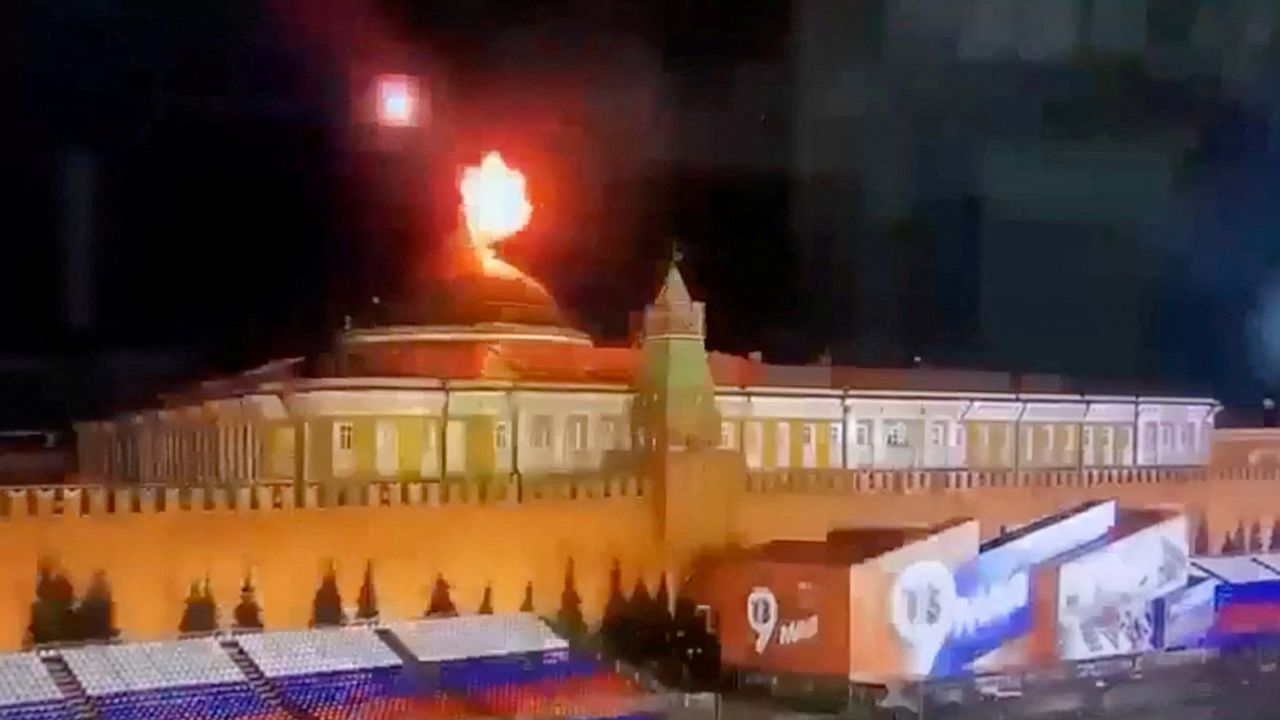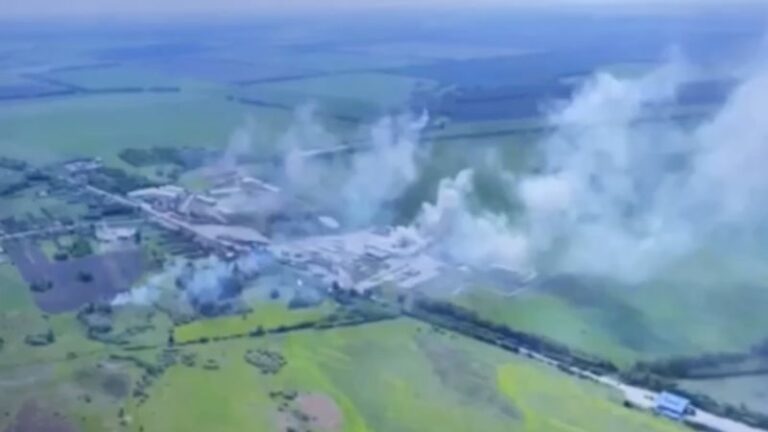CNN
—
An apparent attack on Russian soil by anti-Putin Russians, fighting in support of Ukraine, has sparked confusion and anger in Moscow.
Residents of the settlements under attack in Russia’s Belgorod region have been resettled in other areas as authorities continue “clearing the territory” after the cross-border incursion that launched in Ukraine, officials said on Tuesday.
But questions linger about the group behind the attack, how it took place, and what it means for the war.
Here’s what you need to know.
The two groups of anti-Putin Russian nationals, who are fighting in Ukraine as part of Kyiv’s defense forces, the Freedom for Russia Legion and Russian Volunteer Corps, claimed responsibility for the attack in Russian’s southwestern region of Belgorod, which borders north-eastern Ukraine.
“Residential and administrative buildings and civilian infrastructure were subjected to mortar and artillery fire. As a result of these criminal actions, several civilians were wounded,” Russia’s Investigative Committee said on Telegram as it announced an investigation into the attack.
Two areas of the region were then hit overnight by unmanned aerial vehicles (UAVs), according to regional governor Vyacheslav Gladkov, causing two houses to catch fire.
It appears to mark the first time since Russia invaded Ukraine that Kyiv-aligned forces have launched a cross-border land operation on Russian targets.
Aleksey Baranovsky, a representative of the Kyiv-based Russian Armed Opposition Political Centre – the political wing of the Freedom for Russia Legion – told CNN that the operation had started Sunday night and fighting was “ongoing.”
He would not specify the number of fighters who had crossed the border into Russia. Baranovsky said the group wanted to “liberate our motherland from the tyranny of Putin.”
There were no deaths among civilians in Belgorod, according to Gladkov.
The Russian Ministry of Defense said in a daily briefing on Tuesday that its forces repelled the attackers back into Ukrainian territory using air strikes, artillery fire and military units. It added: “The remnants of the nationalists were driven back to the territory of Ukraine, where they continued to be hit by fire until they were completely eliminated.”
The Freedom for Russia Legion said on Telegram early on Tuesday that it and another group, the Russian Volunteer Corps, “continue to liberate the Belgorod region!” The post described the groups as “patriot volunteers” and claimed that Russia was vulnerable to attack as “Russia has no reserves to respond to military crises. All military personnel are dead, wounded or in Ukraine.”
As one of its fighters, who goes by the call-sign “Caesar,” says in a video statement he recorded with his comrades before joining a cross-border raid into his motherland: “Russia will be free.”
CNN’s Sam Kiley interviewed that same fighter in December, while the group was fighting for Ukraine against Russian attacks on the frontline city of Bakhmut.
“From the first day of the war, my heart, the heart of a real Russian man, a real Christian, told me that I had to be here to defend the people of Ukraine,” Caesar said. CNN agreed not to reveal his name to protect his identity.
“It was a very difficult process,” Caesar said of joining the Ukrainian effort. “It took me several months to finally join the ranks of the defenders of Ukraine.”
Now with his family in Ukraine – where he considers them to be safer – Caesar said he was one of about 200 Russian citizens currently fighting alongside Ukrainian troops, against their own country’s armies. CNN has been unable independently to confirm this number.
As Russian officials condemned the attack, analysts noted widespread confusion in Russia’s information space about how the attack was allowed to take place and how Moscow should respond.
Russian bloggers and pundits reacted with a “degree of panic, factionalism, and incoherency as it tends to display when it experiences significant informational shocks,” the Institute for the Study of War (ISW) think tank wrote in its daily briefing on the conflict.
“The attack took Russian commentators by surprise,” the ISW assessed.
It has the potential to be embarrassing for President Vladimir Putin, who has for 15 months been leading an invasion he baselessly claimed was needed to keep Russia safe. With limited returns on the battlefield, Putin may now face discontent that the war is disrupting life at home.
Earlier this month, the Kremlin publicized an incident which saw two drones fly above the Kremlin. It remains unclear who was responsible – Moscow blamed Ukraine for what it called an attack on Putin’s life; Ukraine and the US denied any involvement – but the dramatic video could be framed by Putin’s internal critics as a visual example of the unraveling nature of Moscow’s war.

In a separate incident Monday evening, the Freedom for Russia Legion posted a video on Telegram that appears to show the blue and white so-called flag of free Russia flying over Moscow State University.
Other videos posted by the group also appear to show another Russian opposition flag flying over various areas of the Russian capital.
The group did not claim direct responsibility for the incidents and CNN could not independently verify the reports.
As has often been the case following supposed violence on Russian soil since Moscow invaded Ukraine, the incident has drawn sharply different accounts from the Kremlin and Kyiv.
Kremlin spokesperson Dmitry Peskov on Tuesday described the instigators as “Ukrainian militants, from Ukraine,” despite the fact that the group claiming responsibility is made up of Russian nationals. Peskov had previously said the Kremlin’s forces were working to push out a “sabotage and reconnaissance group,” according to state media TASS.
A Ukrainian official acknowledged that the units had carried out an operation in the area but insisted they were acting independently.
“We can confirm that this operation was carried out by Russian citizens,” Andriy Yusov, a representative of Ukraine’s defense intelligence agency, told CNN.
He said the units were “part of defense and security forces” when they were in Ukraine, but were independent from Kyiv when they were not: “In Russia they are acting as independent entities.”
The attacks are unlikely to force a shift in momentum in the wider war in Ukraine, which has been largely focused in Ukraine’s eastern regions and has seen little territory change hands for several months. The conflict has been in a virtual stalemate and is more likely to be affected by Ukraine’s spring counter-offensive against Russian forces, which may already be underway.
But as with previous flashpoints away from the frontlines, it has the potential to shape the narrative surrounding the conflict in both Russia and Ukraine.
Moscow has always been eager to paint a picture of Russian victimhood as a pretext for ramping up attacks on Ukraine, given its public pretense that the invasion is an act of self-defense and is necessary to keep Russia safe. Putin will no doubt look to use these attacks to bolster that narrative, despite Kyiv’s denials that it had any official involvement.
It is possible that a short-term show of anger may also follow. After previous incidents that have embarrassed Russia – such as the murky drone incident above the Kremlin this month, and the strike on the bridge connecting Russia to occupied Crimea in October – Moscow has responded with a barrage of missile attacks across Ukraine, including on the capital Kyiv.
Putin will likely be eager to focus Russian attention on incidents away from the frontlines, where his forces have been struggling to land a significant blow against Ukrainian defenses – most clearly shown by the months-long, costly effort to capture the relatively insignificant city of Bakhmut.



